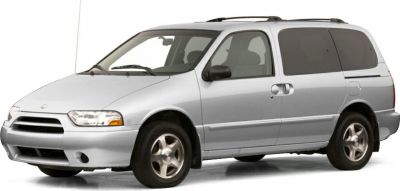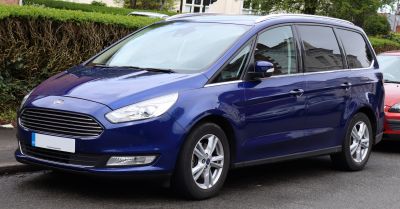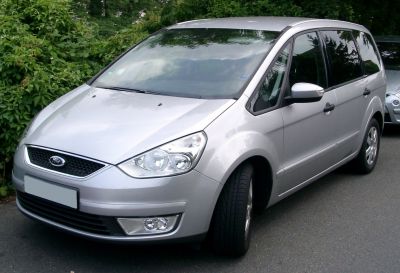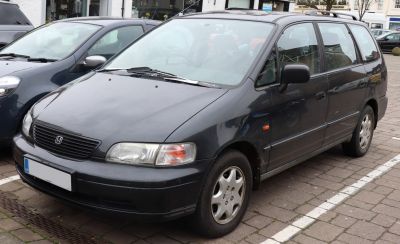 2000 Hyundai Trajet (FO) Dimensions, Size & Specs
2000 Hyundai Trajet (FO) Dimensions, Size & SpecsMeasurements of the 2000 Hyundai Trajet, engineered for optimal performance and comfort
| Dimensions | |
|---|---|
| Length: | 4695-4895 mm184.8-192.7 in15.4-16.1 ft |
| Width: | 1840 mm72.4 in6.0 ft |
| Height: | 1710 mm67.3 in5.6 ft |
| Trunk Capacity: | 304 liter10.7 cu ft |
| Trunk Capacity (Max): | 2716 liter95.9 cu ft |
| Weight Specifications | |
| Curb Weight: | 1812-1881 kg3995-4147 lbs |
| Maximal permitted Weight: | 2400-2510 kg5291-5534 lbs |
| Tire Specifications | |
| Rims Size: |
|
| Tire Size: |
|
The Hyundai Trajet (FO), produced between 2000 and 2008, is a spacious and versatile minivan designed to accommodate families and groups with a strong focus on practicality and comfort. Classified as a mid-size minivan, the Trajet’s exterior dimensions range between 4695 mm to 4895 mm (184.8 to 192.5 inches) in length, 1840 mm (72.4 inches) in width, and 1710 mm (67.3 inches) in height. These dimensions provide a balanced footprint that allows easy maneuverability while offering substantial interior space. The vehicle’s curb weight ranges from 1812 to 1881 kg (3996 to 4148 lbs), with a maximum gross weight between 2400 and 2510 kg (5291 to 5535 lbs), reflecting its capacity for passengers and cargo. The Hyundai Trajet is equipped with 15-inch rims and tire size 215/65 R15, ensuring a stable and comfortable driving experience on various road surfaces. One of the standout features of the Trajet is its impressive luggage capacity: it offers 304 liters (10.7 cubic feet) of cargo space with all seats in place, which expands dramatically to 2716 liters (95.9 cubic feet) when the rear seats are folded down, demonstrating its flexible interior layout. This flexibility makes the Trajet suitable for transporting large items or handling extended trips with extra baggage. Overall, the Hyundai Trajet (FO) presents a practical option in the minivan segment, combining ample interior room, reasonable exterior dimensions, and adaptable cargo solutions, making it a dependable vehicle for family use or commercial applications during its production years.
Discover the standout features that make the 2000 Hyundai Trajet a leader in its class
Have a question? Please check our knowledgebase first.
The Hyundai Trajet (FO) minivan from 2000 to 2008 has a length ranging between 4695 mm and 4895 mm (184.8 to 192.5 inches), a width of 1840 mm (72.4 inches), and a height of 1710 mm (67.3 inches). These dimensions position the Trajet as a spacious vehicle in the minivan category, offering a good balance of interior space while maintaining manageable external proportions for urban and suburban driving.
The curb weight of the Hyundai Trajet (FO) ranges between 1812 kg and 1881 kg (3995 to 4147 pounds), which reflects the weight of the vehicle without passengers or cargo but with all necessary operating fluids. Its maximum weight capacity ranges from 2400 kg to 2510 kg (5291 to 5535 pounds), indicating the total weight the vehicle can safely carry, including passengers, cargo, and fuel. This makes the Trajet robust enough for family trips and various hauling needs common for minivan owners.
The Hyundai Trajet (FO) offers a practical luggage capacity of 304 liters (10.7 cubic feet) with all rear seats in place, suitable for daily family needs or small load transport. When the rear seats are folded down, the cargo space expands significantly to 2716 liters (95.9 cubic feet), making it ideal for carrying large items or accommodating significant luggage for long trips or moving purposes.
The Hyundai Trajet (FO) is equipped with 15-inch rims fitted with tires sized 215/65 R15. This tire size strikes a balance between road comfort, fuel efficiency, and handling stability, which is particularly important in a minivan designed to prioritize passenger comfort and safety.
Yes, the Hyundai Trajet (FO) fits into a standard residential garage. With a length of up to 4895 mm (192.5 inches), a width of 1840 mm (72.4 inches), and a height of 1710 mm (67.3 inches), it is slightly longer and taller than many compact cars but remains within the typical garage dimension limits. However, garage clearance height should be considered as some garages with low overhead doors or fixtures may require confirmation of compatibility before parking.
The Hyundai Trajet (FO), introduced in 2000, marked Hyundai’s dedicated minivan entry and did not have a direct predecessor in Hyundai's lineup. Compared to earlier Hyundai models mainly consisting of sedans and smaller family cars, the Trajet offered significantly increased interior space, seating for up to seven passengers, and a larger footprint to compete with other minivans. It represented a step up in vehicle size and versatility for Hyundai, targeting families and group transport needs more directly.
Compared with similar minivans from the early 2000s, like the Chrysler Voyager or Ford Galaxy, the Hyundai Trajet (FO) holds its own in terms of exterior size and interior flexibility. Its length range (4695 - 4895 mm) and width (1840 mm) align closely with competitors, allowing for seven-passenger seating and competitive cargo capacity, especially with rear seats folded (up to 2716 liters). Though some rivals might offer slightly larger cabin volumes or more advanced interior features, the Trajet is praised for its spaciousness, reliability, and value within this segment.
While specific interior height measurements are not detailed for the Hyundai Trajet (FO), its exterior height of 1710 mm (67.3 inches) provides good headroom for passengers across all three rows. The minivan design focuses on maximizing passenger comfort, with ample legroom and headroom facilitated by the vehicle's relatively tall and wide body dimensions. This makes the Trajet a comfortable option for families and groups, with easy entry and exit and sufficient space for long journeys.
The Hyundai Trajet (FO) offers a range of engines (primarily petrol and diesel, depending on market) designed to balance performance and fuel efficiency for a family minivan. While exact fuel economy figures vary by engine type and market, expect average consumption around 8 to 10 liters per 100 km (23.5 to 29.4 mpg US), typical for minivans of its era and size. Engine output provides adequate power for urban and highway driving, supporting fully loaded rides given the Trajet’s curb weight close to 1800-1880 kg.
The Hyundai Trajet (FO) is designed as a seven-seater minivan, featuring three rows of seats. The standard configuration includes two front seats, a second row typically with three seats or captain’s chairs in some trims, and a third-row bench that accommodates two passengers. The rear seats are foldable, enabling a versatile arrangement between passenger comfort and cargo space, which is particularly useful for families needing to switch between carrying people and larger items.
Discover similar sized cars.

| Production: | 1992-2002 |
|---|---|
| Model Year: | 1993 |
| Length: | 4823 mm189.9 in |
| Width: | 1872 mm73.7 in |
| Height: | 1717 mm67.6 in |

| Production: | 2021-2023 |
|---|---|
| Model Year: | 2020 |
| Length: | 4848 mm190.9 in |
| Width: | 2137 mm84.1 in |
| Height: | 1747 mm68.8 in |

| Production: | 2015-2019 |
|---|---|
| Model Year: | 2015 |
| Length: | 4848 mm190.9 in |
| Width: | 2137 mm84.1 in |
| Height: | 1747 mm68.8 in |

| Production: | 2006-2010 |
|---|---|
| Model Year: | 2006 |
| Length: | 4820 mm189.8 in |
| Width: | 1854 mm73.0 in |
| Height: | 1723 mm67.8 in |

| Production: | 1995-1999 |
|---|---|
| Model Year: | 1995 |
| Length: | 4765 mm187.6 in |
| Width: | 1793 mm70.6 in |
| Height: | 1641 mm64.6 in |

| Production: | 1995-1998 |
|---|---|
| Model Year: | 1993 |
| Length: | 4823 mm189.9 in |
| Width: | 1872 mm73.7 in |
| Height: | 1717 mm67.6 in |

| Model Year: | 2003 |
|---|---|
| Length: | 4765 mm187.6 in |
| Width: | 1795 mm70.7 in |
| Height: | 1655 mm65.2 in |

| Production: | 2020-present |
|---|---|
| Model Year: | 2020 |
| Length: | 4815 mm189.6 in |
| Width: | 1874 mm73.8 in |
| Height: | 1720 mm67.7 in |
